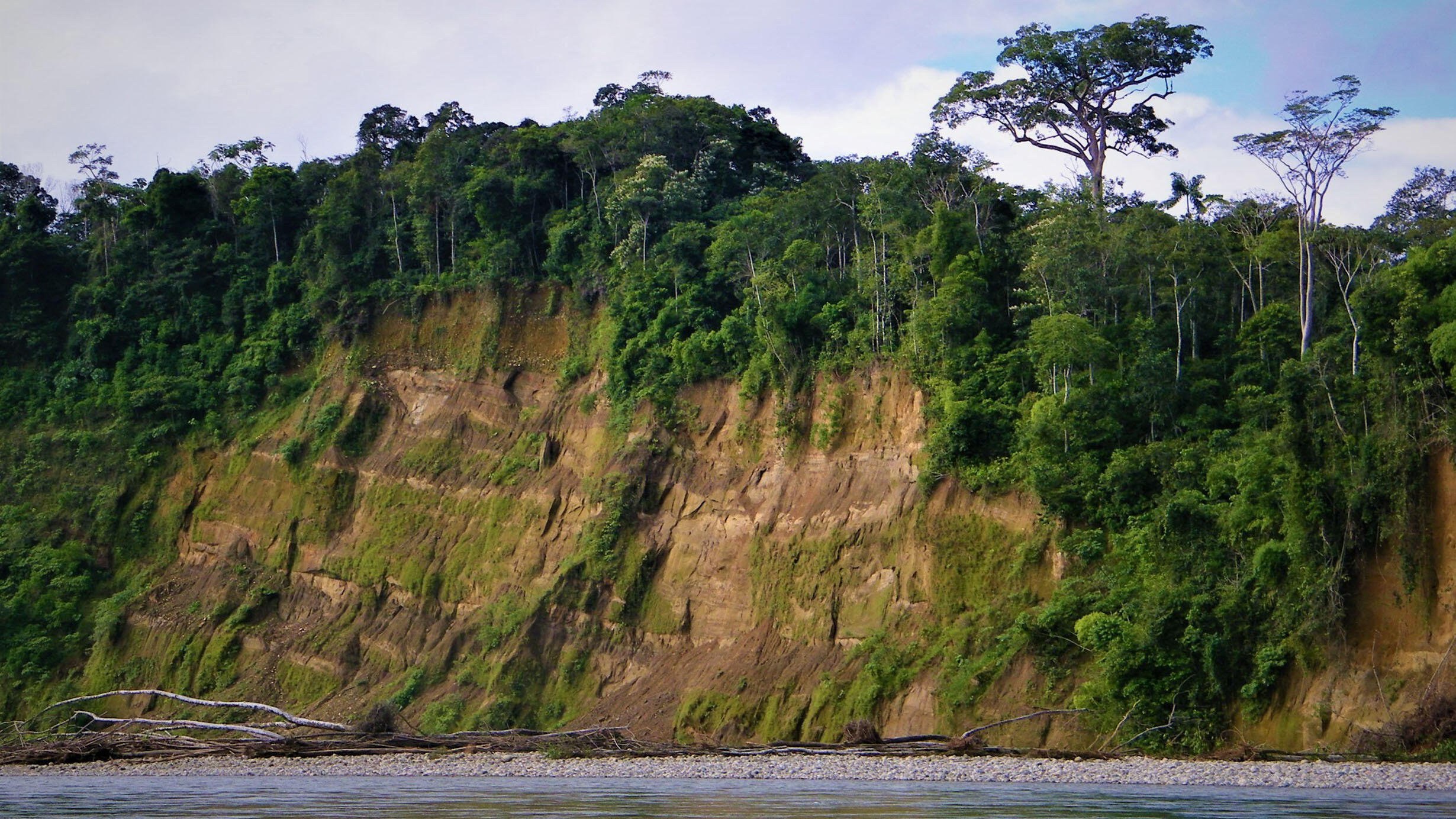Ancient Rainforest Indicator Should be Reconsidered, Museum Scientists Find
by AMNH on
 Madre de Dios, Peruvian Amazonia
Madre de Dios, Peruvian AmazoniaP.-O. Antoine/ © University of Montpellier
Sometimes called the “lungs of the planet,” rainforests are a vital part of the Earth’s ecosystems: they absorb carbon dioxide, stabilize climate, and serve as the home for a rich variety of plants and animals.
But tropical plants don’t preserve well in the fossil record, so it is difficult to tell how long these habitats have existed and where rainforests might have once grown. Instead, scientists investigate the diets of extinct animals, which lock evidence of the plants they ate into their teeth. A new study out this week in the journal Proceedings of the National Academy of Sciences, led by Museum scientists, challenges the standard used for identifying closed-canopy rainforests through these dietary signatures.
“The Amazon is the world’s most diverse rainforest, home to one in 10 known species on Earth,” said Julia Tejada-Lara, who led the study as a graduate student at the Museum and Columbia University. “Closed-canopy rainforests have been proposed to occur in this area since at least the Eocene, some 50 million years ago, but we know very little about their extent and evolution through time.”
© J. Tejada-Lara
To reconstruct ancient ecosystems, researchers often analyze teeth and other biological tissues of extinct and living herbivores using a specific biomarker: stable carbon isotopes. Stable carbon isotopes form in specific proportions inside plants and are preserved in the body tissues of the animals that eat those plants, so scientists can use these biomarkers to determine the kinds of vegetation that was consumed.
In the new study, Tejada-Lara and her colleagues analyzed specimens from western Amazonia using collections at the Museum and at the Museum of Natural History in Lima. The research team then compared their results with an analysis of modern mammals in equatorial Africa, a landmark study that is used as a proxy to identify past closed-canopy rainforests around the world.
“Up to this point, there had only been one other broad isotopic sampling—and inferences of food sources—of a tropical closed-canopy rainforest mammal community, and that was in central Africa,” said co-author John Flynn, Frick Curator of Fossil Mammals in the Museum’s Division of Paleontology. “So we knew that if we wanted to learn more about both modern and ancient Amazon ecosystems, we had to test whether we should expect the tropical forest conditions to be roughly the same in these two continents that separated more than 90 million years ago and have an ocean between them today.”
R. Salas-Gismondi/ © Universidad Cayetano Heredia
The comparison revealed that despite their distance, Amazonian and African closed-canopy rainforests have a very similar average dietary carbon isotopic value, and it may be representative of mammalian herbivores in any closed-canopy rainforest. However, Amazonian mammals in this study lacked highly negative dietary values found in a few of the African animals. These negative values are often used outright to infer closed-canopy rainforests in fossil records.
“We have found that these negative isotopic values can no longer be used as an indispensable indicator of a rainforest,” Tejada-Lara said. “And further, that many of the longtime assumptions about ecological niches, feeding habits, and isotopic signatures characterizing tropical communities likely need to be reassessed.”